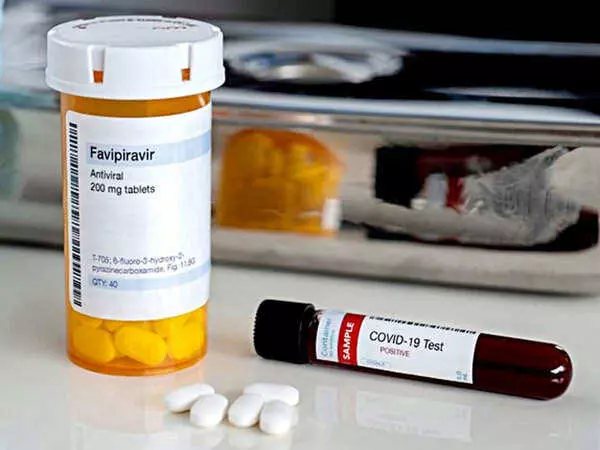Favipiravir side-effects: Hyderabad doctors press alarm button after Thailand boy’s eyes turned blue
Recent studies have shown that the drug can lead to a higher rate of viral clearance and shorter clinical improvement time in hospitalized patients.
By Anoushka Caroline Williams
Representational Image.
Hyderabad: In a rare and intriguing case, a six-month-old boy in Thailand experienced a startling side effect after receiving a common COVID-19 treatment. His dark brown eyes dramatically turned deep blue during his therapy with the antiviral drug favipiravir.
This unusual occurrence has sparked discussions about the safety of this medication, particularly in pediatric patients.
The case, documented in a study published in the journal Frontiers in Pediatrics, involved an infant who had been diagnosed with a SARS-CoV-2 infection.
He was prescribed favipiravir therapy after developing symptoms typical of COVID-19, including a cough and fever.
The child's mother noticed the startling change in eye color within just 18 hours of starting the treatment.
However, the color returned to normal within five days after the medication was discontinued.
Researchers from the Chulabhorn Royal Academy in Bangkok, Thailand, who conducted the study, emphasize the need for careful monitoring of favipiravir therapy in children.
The sudden corneal discoloration observed in this case has raised concerns, as its long-term effects remain unknown. Favipiravir first gained attention as a treatment for SARS-CoV-2 in Wuhan, China, in 2020 and has received emergency use authorization in several countries.
Recent studies have shown that the drug can lead to a higher rate of viral clearance and shorter clinical improvement time in hospitalized patients.
However, it does not appear to benefit individuals who are not hospitalized. Despite these potential benefits, there are notable side effects associated with favipiravir usage.
The most frequently reported side effects include mild hyperuricemia (elevated uric acid levels in the blood), diarrhea, and neutropenia (a decrease in a type of white blood cells), which accounted for 20 percent of all adverse events.
In addition to these common side effects, rare adverse effects have been documented, such as the bluish discoloration of the cornea, temporary visual blurring, and fluorescence of the ocular surface.
Remarkably, these adverse reactions tend to resolve after discontinuation of the medication. However, in the case of the six-month-old boy in Thailand, the resolution of the bluish corneal discoloration was notably slower.
Researchers believe that various factors, including age, dosage, and treatment duration, may contribute to this difference, but the exact reason remains unclear.
This case underscores the need for caution when administering favipiravir to pediatric patients, especially those in the developmental stage.
Dr. Ramesh Reddy, Pediatrician at Apollo Hospital said"The case of the infant with changing eye color is indeed intriguing. While favipiravir has shown promise in treating COVID-19, this incident emphasizes the need for heightened vigilance when prescribing it to young children."
Dr. Sunita Sharma, a Hyderabad-based Ophthalmologist stated “The temporary corneal discoloration observed in this case is a rare side effect of favipiravir. It's crucial for healthcare providers to be aware of such possibilities and to closely monitor patients for any unusual reactions."
Dr. Rajesh Kumar, Infectious Disease Specialist added “Favipiravir has been an important tool in managing COVID-19, especially in severe cases. However, this case reminds us that we must continuously assess the safety of these treatments, especially in the pediatric population."
While it is currently a primary oral antiviral treatment for children with COVID-19, its safety profile in this specific age group is uncertain.
Researchers stress the importance of ongoing monitoring to assess the long-term safety of favipiravir in pediatric patients.
As the world continues to combat the COVID-19 pandemic, this unusual case highlights the complexities of treating the virus and the need for comprehensive research into the safety and efficacy of various treatment options, especially in vulnerable populations like infants.